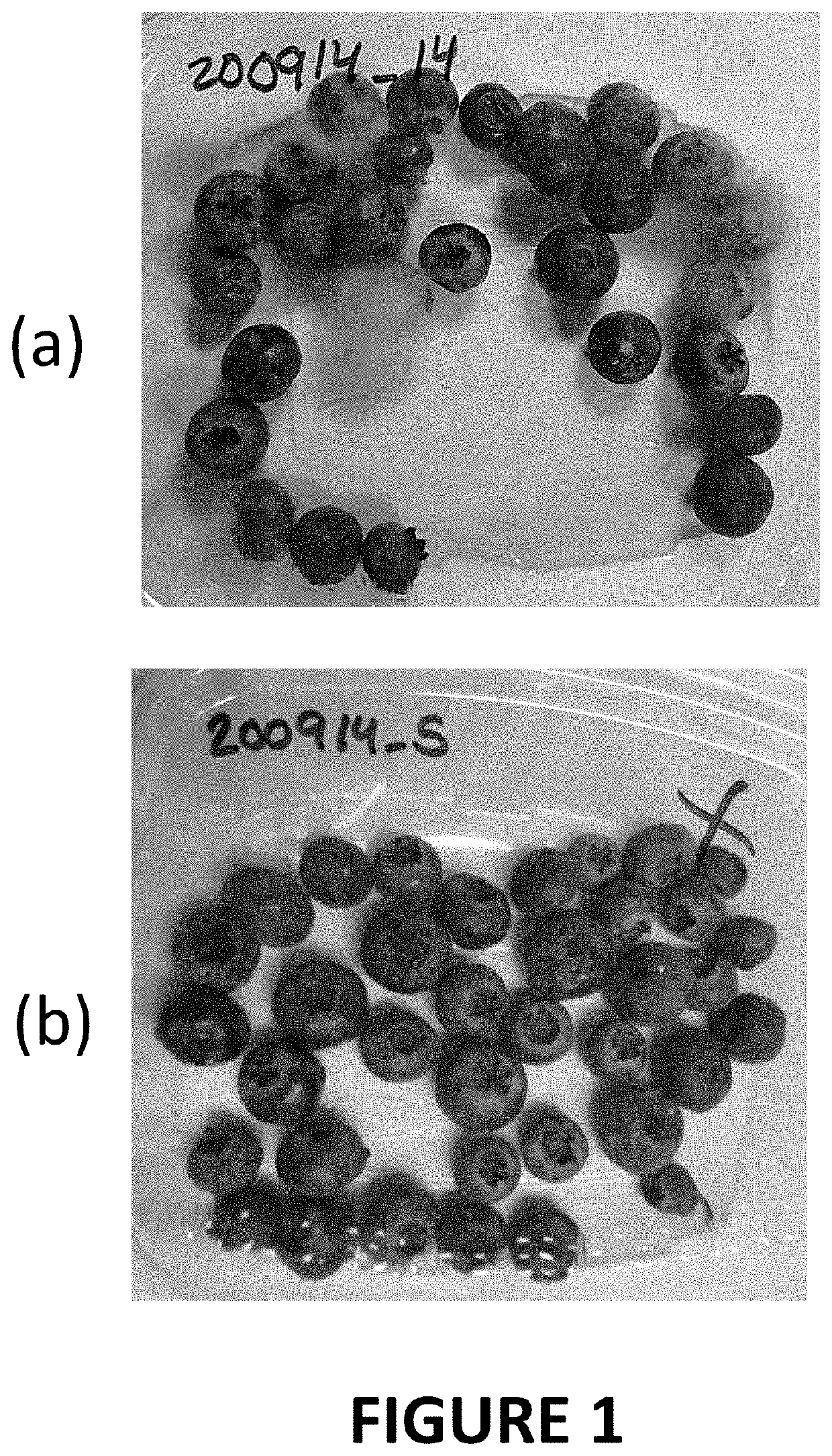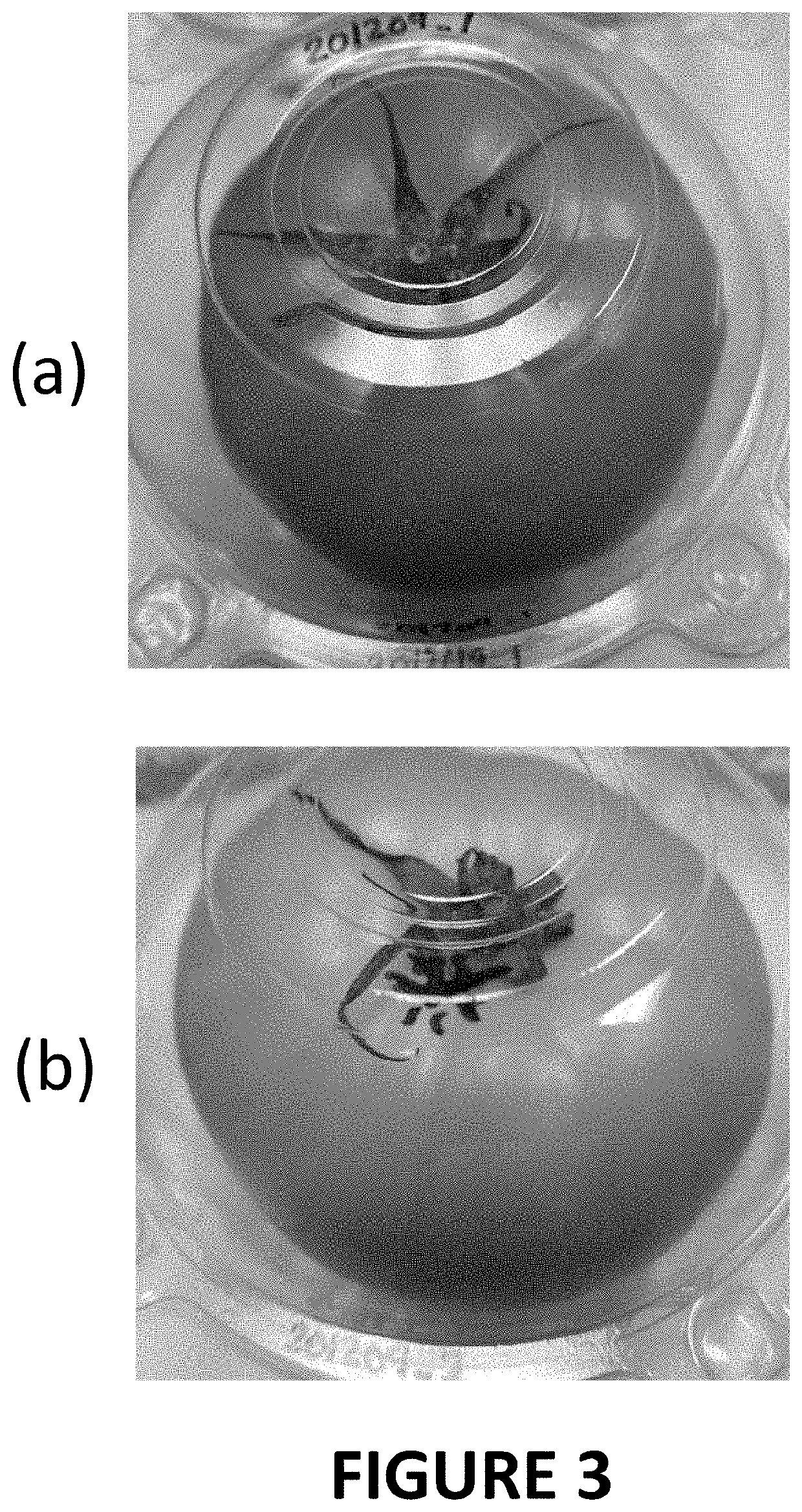Materials and methods for extending shelf-life of foods
a technology of materials and methods, applied in the field of extending the shelf life of foods, can solve the problems of loss of crispiness/firmness, loss of firmness, protein and fat breakdown, etc., and achieve the effects of prolonging the shelf life of food, prolonging the shelf life of produce, and delaying germination or sprouting
- Summary
- Abstract
- Description
- Claims
- Application Information
AI Technical Summary
Benefits of technology
Problems solved by technology
Method used
Image
Examples
example 1
s Used for Testing
[0216]Food exposed to preservatives or by a sachet was placed in typically polystyrene or acrylic containers depending upon the size and number of food items. Glass jars and bottles were also used. The containers were snap-closed or with a lid. The containers were purchased mainly from Amazon or Webstaurant.com store. When needed, plastic containers with holes or without lids were used.
example 2
ives
[0217]The following shelf-life extenders were more widely used than the others: Allyl isothiocyanate: CAS number 57-06-7, Cyclohexanone: CAS number 108-94-1, 2-Cyclohexen-1-one: CAS number 930-68-7, 1-Methyl-1-cyclopentene: CAS number 693-89-0, Acetylacetone (Pentane-2,4-dione): CAS number: 123-54-6, 3-chlorophenylboronic acid: CAS 63503-60-6, Phenylboronic acid: CAS #98-80-6, and Butylboronic acid: CAS #4426-47-5. These chemicals were mainly purchased from TCI America, Portland, Oreg. and Sigma Aldrich, St. Louis, Mo.
example 3
[0218]For controlled exposure and a constant supply of a preservative to foods, sachets containing one or more drops of preservatives were used. Sachets were made by placing an appropriate amount of a preservative in a plastic bag containing a piece of paper and heat sealing the bag. The sachet bag materials used were Tyvek® for solid preservative, polyethylene, polyester and high barrier multilayer films were used for liquid preservatives. These bags were sealed with a heat sealer. The sachet was typically applied on one side of the container containing food.
PUM
 Login to View More
Login to View More Abstract
Description
Claims
Application Information
 Login to View More
Login to View More - R&D
- Intellectual Property
- Life Sciences
- Materials
- Tech Scout
- Unparalleled Data Quality
- Higher Quality Content
- 60% Fewer Hallucinations
Browse by: Latest US Patents, China's latest patents, Technical Efficacy Thesaurus, Application Domain, Technology Topic, Popular Technical Reports.
© 2025 PatSnap. All rights reserved.Legal|Privacy policy|Modern Slavery Act Transparency Statement|Sitemap|About US| Contact US: help@patsnap.com



